
The great Victoria Falls
Africa is a continent that hasn’t seen the same development of human construction as some of the other continents, but that doesn't mean it's without some amazing landmarks. Most of them may be natural, but on their ability to inspire awe, they compete with all of their man made rivals around the world.
Victoria Falls, Zambia and Zimbabwe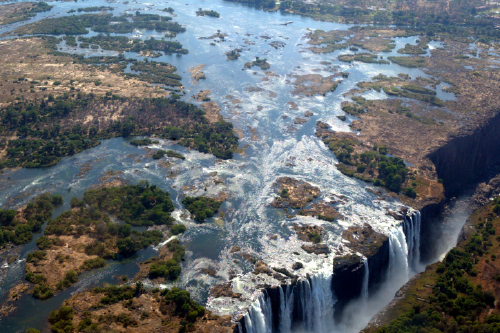 Much like Niagara Falls acts as a border between the USA and Canada, Victoria Falls divides the central African countries of Zambia and Zimbabwe. Like many places around the world with the name, Victoria, these falls are named after Queen Victoria. While Niagara may be more famous with Western tourists, do not be fooled into thinking it's the biggest, as Victoria dwarfs it at over double the height and is said to be the largest body of falling water in the world.
Much like Niagara Falls acts as a border between the USA and Canada, Victoria Falls divides the central African countries of Zambia and Zimbabwe. Like many places around the world with the name, Victoria, these falls are named after Queen Victoria. While Niagara may be more famous with Western tourists, do not be fooled into thinking it's the biggest, as Victoria dwarfs it at over double the height and is said to be the largest body of falling water in the world.
For ultimate thrill seekers, have a swim in the Devil’s Pool - a collection of stationary water right on the edge of the waterfall. Visitors have been swimming in the pool for years, but it is only accessible at certain times in the year, when the waterflow is at its slowest.
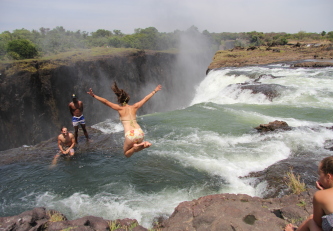
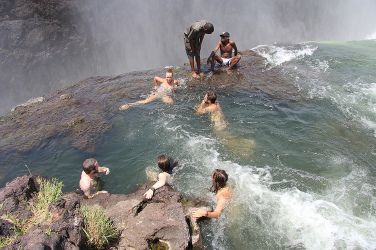
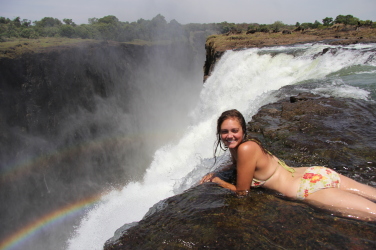
Flickr, joeypyrek
Kilimanjaro National Park, Tanzania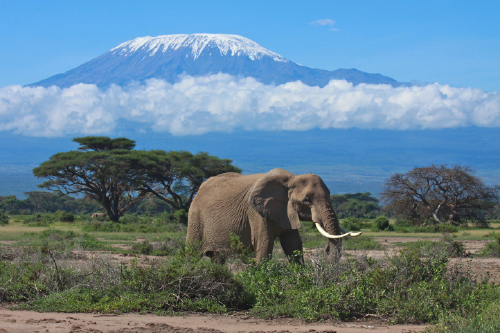 After Everest, Kilimanjaro is probably the best known mountain in the world. The volcanic rock has three peaks, two of which are extinct and the last remains dormant. Trekking the mountain is more than just something for outdoors lovers, but an intense physical challenge that needs rigorous preparation. However, those that don’t want to climb the mountain can still enjoy outdoor walks, breathtaking scenery and the nearby city of Arusha.
After Everest, Kilimanjaro is probably the best known mountain in the world. The volcanic rock has three peaks, two of which are extinct and the last remains dormant. Trekking the mountain is more than just something for outdoors lovers, but an intense physical challenge that needs rigorous preparation. However, those that don’t want to climb the mountain can still enjoy outdoor walks, breathtaking scenery and the nearby city of Arusha.
The Big Hole, Kimberley, South Africa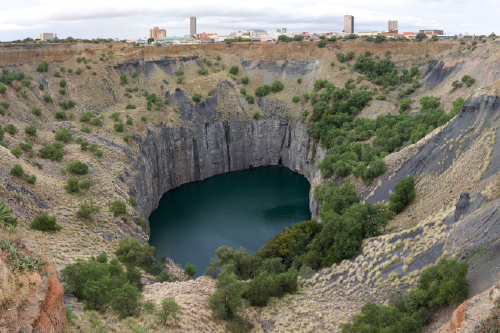 Aptly named The Big Hole, this big hole in Northern Cape is one of the most famous of South Africa’s diamond mines. The 1,500 ft wide mine was hand dug by miners and took nearly half a decade. Completed in 1914 the hole has now been well branded and designed for tourism and an attraction that your friends and family may not have heard of. The Big Hole offers up as a venue for functions, such as weddings and birthdays, or can simply be visited as a day trip. It’s only £5 to get in, so it’s well worth the visit.
Aptly named The Big Hole, this big hole in Northern Cape is one of the most famous of South Africa’s diamond mines. The 1,500 ft wide mine was hand dug by miners and took nearly half a decade. Completed in 1914 the hole has now been well branded and designed for tourism and an attraction that your friends and family may not have heard of. The Big Hole offers up as a venue for functions, such as weddings and birthdays, or can simply be visited as a day trip. It’s only £5 to get in, so it’s well worth the visit.
Giza Pyramids, Giza, Egypt By far the most famous attraction on the continent, and on the planet. A separate list could be made simply for the attractions in Egypt, so we’re throwing these ones together for you to get a glimpse at some other treasures Africa has on offer. Of course, your visit to Giza will allow you to see all of the other surrounding attractions like the Sphinx and the selection of famous tombs.
By far the most famous attraction on the continent, and on the planet. A separate list could be made simply for the attractions in Egypt, so we’re throwing these ones together for you to get a glimpse at some other treasures Africa has on offer. Of course, your visit to Giza will allow you to see all of the other surrounding attractions like the Sphinx and the selection of famous tombs.
Masai Mara, Kenya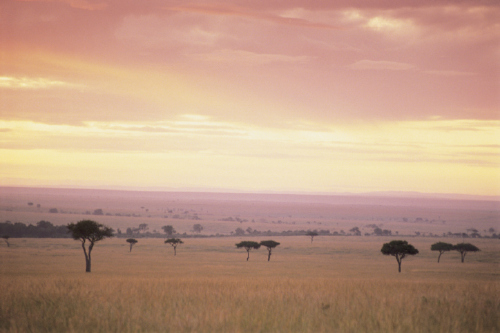 One of the top safari spots in the world, Kenya’s famous game reserve is visited by tourists every year, looking for the best of African wildlife. While there are many wildlife safaris around the world, few are as consistent as the Mara, which sees animal migration year round.
One of the top safari spots in the world, Kenya’s famous game reserve is visited by tourists every year, looking for the best of African wildlife. While there are many wildlife safaris around the world, few are as consistent as the Mara, which sees animal migration year round.
One of the top tourist attractions is the migration of the Wildebeests to and from the Mara to Tanzania’s Serengeti, although timing can be difficult, as the animals’ migration is based on loosely predictable weather patterns.
Fish River Canyon, Namibia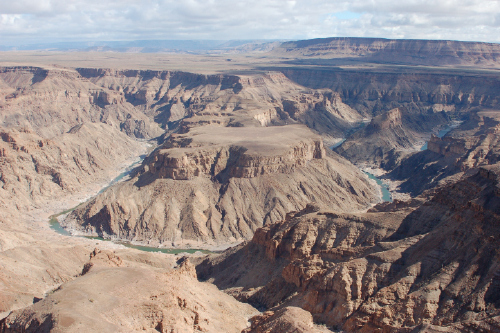 If you’re looking for an African alternative to America’s Grand Canyon, then here it is. The Canyon is only open between May and September - Namibia’s winter - because of excessive heat and the risk of floods. Although the canyon isn’t as big as the Grand Canyon, it’s also less swamped with tourists, allowing a genuinely peaceful experience of nature.
If you’re looking for an African alternative to America’s Grand Canyon, then here it is. The Canyon is only open between May and September - Namibia’s winter - because of excessive heat and the risk of floods. Although the canyon isn’t as big as the Grand Canyon, it’s also less swamped with tourists, allowing a genuinely peaceful experience of nature.
Avenue of the Baobabs, Madagascar Flickr, glowingz
Flickr, glowingz
The Baobab is a tree that is almost completely native to the Southeastern African island of Madagascar. Often called ‘the upside down tree’ for its unique appearance, the region of Morondava sees plenty of tourists who come to visit these enormous natural structures. The Avenue of the Baobabs is a close knit collection of the trees and the perfect place to get up close and personal with them. The trees also provide a great silhouette in a setting sun for the perfect picture.
Djemaa el Fna, Marrakech, Morocco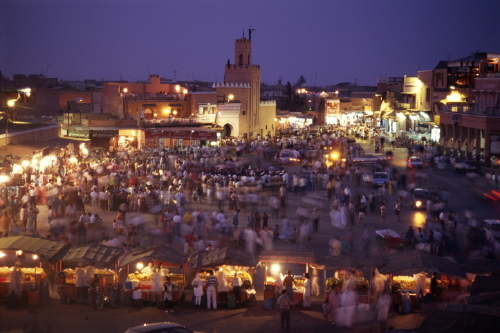 This vibrant and cultural marketplace has been around for 900 years and, despite a lot of changes over those years, it is still an important hub of Marrakech. The square offers culture tradition and entertainment, including the contentious attractions of animal keepers. Each and every night, the square turns into a festival, with music, food and a variety of activities for both locals and tourists.
This vibrant and cultural marketplace has been around for 900 years and, despite a lot of changes over those years, it is still an important hub of Marrakech. The square offers culture tradition and entertainment, including the contentious attractions of animal keepers. Each and every night, the square turns into a festival, with music, food and a variety of activities for both locals and tourists.
While the area is full of foriegn visitors, it is yet to be westernised and still offers a traditional experience of Morocco. Although the area is relatively safe, with an appropriate police presence, tourist touts can still be a little pushy and you will have to learn to say no. Ultimately, Djemaa el Fna is the epitome of atmosphere.
What African landmarks have you been to see? Have we missed any from the list? Tell us what you think by commenting below or tweeting us @FemaleFirst_UK
Female First
James Mellan @jamesmellan1
Tagged in Travel South Africa travel tips Morocco Travel Advice Africa egypt

